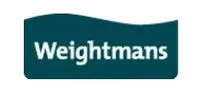- within Cannabis & Hemp topic(s)
We identify the four key issues arising from the judgments for the cases pursued by Stonegate, Greggs and Various Eateries.
The Commercial Court has this week handed down judgments in preliminary issue trials for three COVID-19 business interruption claims: Stonegate Pub Company Ltd v MS Amlin & Others; Greggs Plc v Zurich Insurance Plc; and Various Eateries Trading Ltd v Allianz Insurance Plc. The three matters are not consolidated but deal with many of the same issues arising from business interruption claims affecting multiple insured hospitality premises.
Whilst previous decisions, most notably the FCA Business Interruption Insurance Test Case, were largely determined in policyholders' favour, the latest decisions indicate that the courts will only go so far in interpreting the construction of policy wordings in a policyholder-friendly light. Initial reactions to the decisions appeared to prompt headlines which declared victory for policyholders; perhaps due to an expectation that this trend would continue or as a result of the court's rejection of insurers' most robust submissions on aggregation (that there was one overarching occurrence of COVID-19). However, a proper interpretation of the decisions requires a deeper consideration of the issues at hand and the court's determination of a limited set of preliminary issues. Whilst the decisions were based on sets of agreed and assumed facts, there are four key issues which arise from the judgments which will have wider implications.
Covered events/'triggers'
In each case, the court was asked to determine, as a preliminary issue, what constituted an insured or covered event for the purposes of the policy wording. Whilst this was considered to be central to issues of coverage at the outset of the claims, its significance has largely given way to issues of aggregation. However, the court's findings are beneficial when considering whether there are multiple claims within a policy period and whether a new claim falls under a renewal policy with the benefit of a COVID-19 endorsement. By way of summary:
- Disease Wording – there would be as many insured events as there were cases of COVID-19 which were either (a) discovered at the Premises or (b) occurred within the vicinity of the Premises during the period of insurance (given the specific policy wording).
- Enforced Closure Wording – the 'trigger' was the actual closure of all or part of the insured premises under the relevant order or instruction. The policy would therefore be triggered by each individual closure of each insured premises. However, where closure was enforced by the reiteration, continuation or renewal of regulations which had the same effect, this would not constitute a new 'trigger' or insured event. Instead, there would be one insured event until the insured premises was opened (and subsequently closed again).
- Prevention of Access Wording – the number of insured events would depend on the number of actions/advice of the relevant authority (and would not be multiplied by the number of insured premises). Despite the description as a 'Prevention of Access' wording, it is important to highlight that the relevant insuring clause provided cover for business interruption loss caused by "the actions or advice of the police [or other authority] in the Vicinity of the Insured Locations" rather than by reference to the specific prevention of access to an insured premises.
The Stonegate decision did not determine the number of insured events within the period of insurance. Such issues have been left over to be determined at a later date if not agreed between the parties.
Aggregation
In the three decisions, the court was tasked with considering multiple arguments in respect of aggregation (under an 'occurrence' wording which provided for a limit of liability for any one Single Business Interruption Loss which was defined as all losses that "arise from, are attributable to or are in connection with a single occurrence"). Butcher J rejected numerous arguments advanced on behalf of insurers but concluded that the proper assessment of separate 'occurrences' fell to be determined by reference to government actions/interventions (rather than on a 'per-premises' basis). The phrase "in connection with" an occurrence required only a loose causal connection and did not attach a test of proximate causation.
Whilst the court did not identify a definitive list of 'occurrences', the Various Eateries judgment provides the most comprehensive guidance which suggests that the following actions taken in England would each amount to an 'occurrence':
- The instruction for individuals to avoid social venues on 16 March 2020;
- The order for hospitality businesses to close on 20 March 2020;
- The announcement of a curfew and other restrictions on hospitality businesses on 24 September 2020;
- The introduction of the three-tiered system on 14 October 2020;
- The second national lockdown on 5 November 2020;
- Other local lockdowns or specific restrictions imposed by local authorities.
Whilst the early decisions taken in England, Wales and Scotland in March 2020 could each amount to one occurrence (as opposed to three occurrences, each taking place in the respective jurisdiction), this was possible only because there was a unity of intent and decision-making across the nations at the outset of the pandemic. The court drew a distinction between these unified, coordinated actions and later actions taken without the agreement of all nations. Each action taken by each nation, if not unified, could amount to a separate occurrence.
Despite the court electing not to publish a definitive list of 'occurrences', it is evident from the judgments that the court has chosen a middle ground between the parties' respective positions (insurers arguing that there could be just three occurrences and policyholders claiming that there could be hundreds). The court does not agree that every iteration or restatement of regulations would amount to an occurrence but has instead sought to identify the key changes which affected the hospitality industry. The question of what amounts to a 'restatement' or 'iteration' compared to a new 'occurrence' will surely be the subject of debate in ongoing claims in the absence of specific court guidance as to the measures which would be significant enough to tip the scales.
Further, it is important to note that, should a loss arise from, be attributable to or be connected with more than one 'occurrence' (for example, the orders of both 16 and 20 March 2020), the losses would be aggregated by reference to the earliest occurrence.
Causation
Various principles of causation were considered throughout the judgments, particularly in Stonegate and Various Eateries. In brief, Stonegate claimed that its business interruption losses throughout the entire maximum indemnity period of 36 months, i.e. to April 2023, were caused by insured events which occurred during the period of insurance which ended on 30 April 2020.
Butcher J opined that such a claim appeared to be "implausible" on both a simple and more detailed analysis. Cases of COVID-19 rose and fell throughout 2020-2023 and Government intervention (and resulting losses) was prompted by variants and the influx of cases from overseas. It was not plausible to claim that early cases of COVID-19 (pre-April 2020) were causative of Government responses throughout the 36-month indemnity period within the policy in question. Instead, losses resulting from insured events pre-April 2020 came to an end when the premises were permitted to reopen at the end of the first national lockdown.
In Various Eateries, the court clarified that the determination of the cover period would be acutely fact-specific and would require an assessment as to whether the losses claimed were proximately caused by the insured event. The court concluded that, for prevention of access/enforced closure wordings, (a) the whole period of closure did not need to fall within the period of insurance and it was sufficient for the closure to commence within the policy period; and (b) that there would be circumstances in which losses would continue after the policy period had come to an end (but within the maximum indemnity period). Examples which had the potential to cause loss beyond the policy period included:
- The cancellation of events which had already been organised;
- A relaunch/refurbishment which had been delayed/interrupted by an insured event; and
- Costs incurred in starting venues back up after the end of the first national lockdown.
Treatment of Government assistance
A key area of dispute has been the treatment of certain aspects of Government assistance in the loss adjusting process, particularly furlough payments. Policyholders argue that the deduction of furlough payments from the indemnity available as a 'saving' would result in insurers receiving a windfall when the Government's intention had not been to reduce insurers' exposure.
In positive news for insurers, both the Stonegate and Greggs decisions confirmed that furlough payments were to be deducted from loss calculations as savings. Policyholders' arguments that such payments were simply a reimbursement of employment costs (rather than a reduction in such costs) were rejected. Further, the court considered the basic rules of a contract of indemnity and concluded that:
- Where a third party has made a payment which has eliminated or reduced the loss to the insured (against which it had insurance), insurers are entitled to the benefit of that payment either in reducing any payment that they might have to make under the policy or claiming an amount already paid from the insured.
- As an exception to the above rule, insurers would not be entitled to the benefit of a third party payment if it could be established that the third party intended only to benefit the insured to the exclusion of insurers. It would not matter whether the third party gave any thought to insurers' position.
- There was no express statement from the Government which indicated that the payment was made only in respect of uninsured losses. Therefore, even if insurers did not have the benefit of the savings clause in the policy, they would have been subrogated to the furlough payments as a matter of general law.
It is worth noting that Butcher J did not consider that the treatment of Government assistance depended on a company's financial reporting standards (as had been anticipated by some commentators).
Concluding remarks
The court's decisions on both aggregation, 'triggers' and causation should allow parties to ongoing disputes to re-assess and re-evaluate their positions to resolve any remaining areas of dispute.
Of particular interest is the treatment of furlough payments in loss adjusting calculations. In some cases furlough savings will have a significant impact on the loss adjusting process, especially in circumstances where an insured premises has closed entirely and the policyholder has saved close to the full wage bill throughout the indemnity period.
Stonegate has indicated an intention to appeal aspects of the decision. Whilst we await the details of any such appeal, we would expect issues of aggregation to feature at the core of any appeal given the numerous arguments made by each party and the significance of the decision. We would anticipate that the decisions in respect of the treatment of government assistance would be less prone to further judicial scrutiny. Any formal appeal will be keenly awaited, along with the progress of further COVID-19 business interruption claims such as Lumi Power Yoga Ltd v Covea Insurance Plc and Altrincham Association Football Club v AXA Insurance UK Plc.
The content of this article is intended to provide a general guide to the subject matter. Specialist advice should be sought about your specific circumstances.


